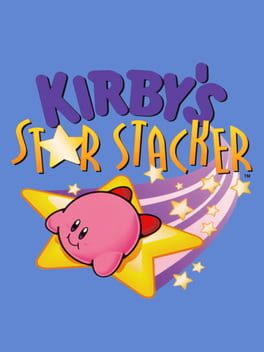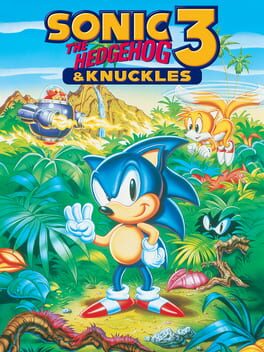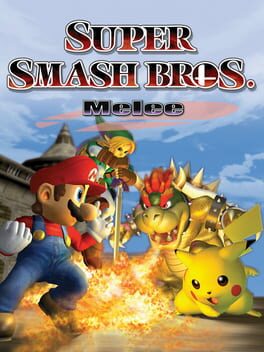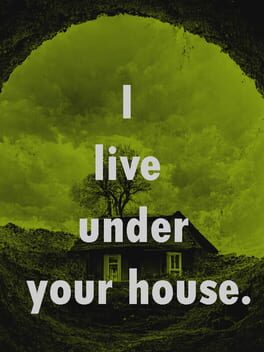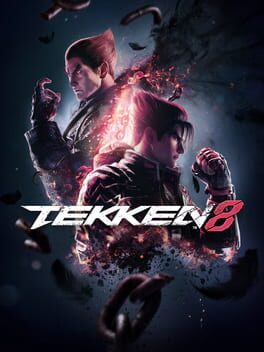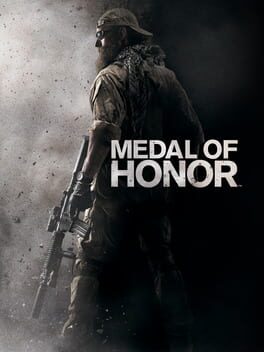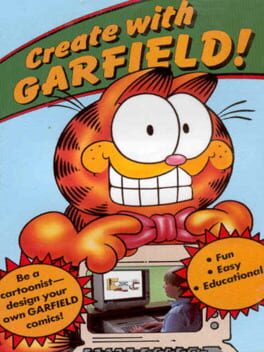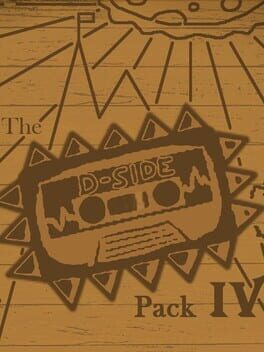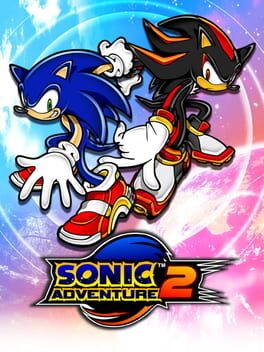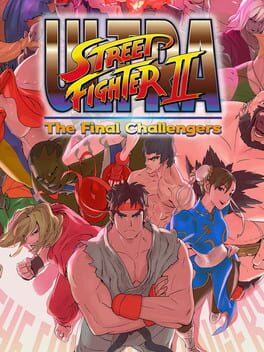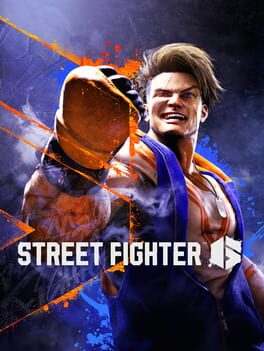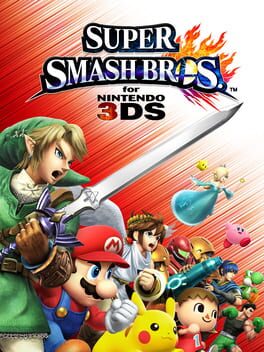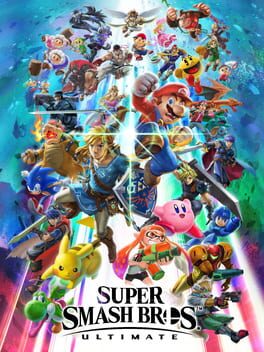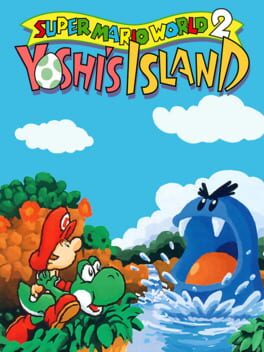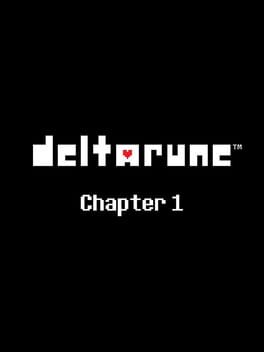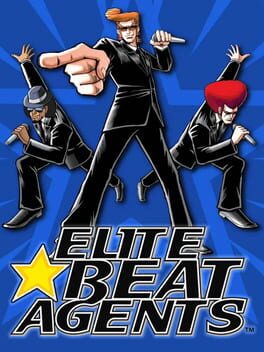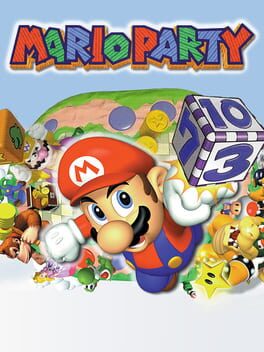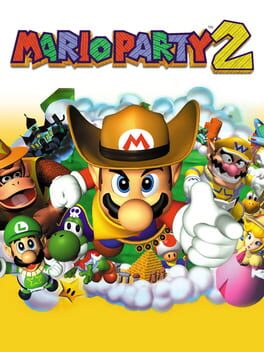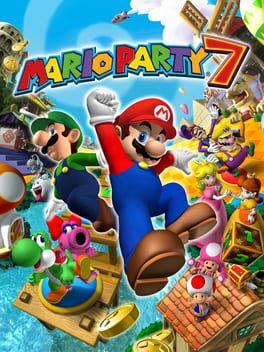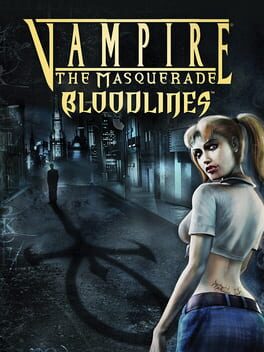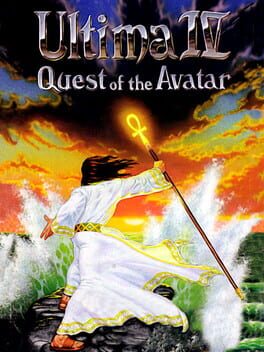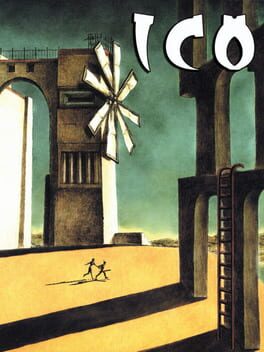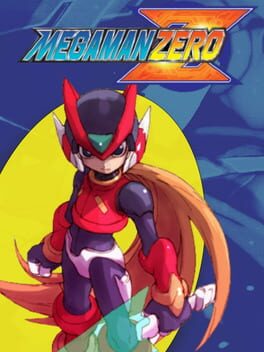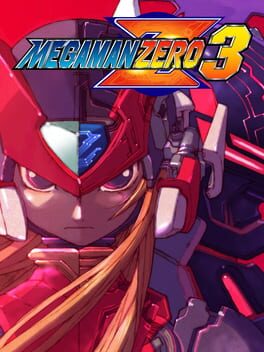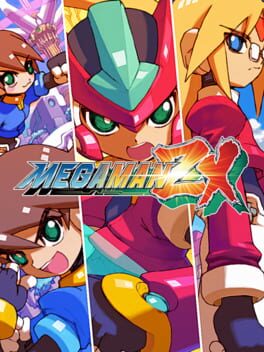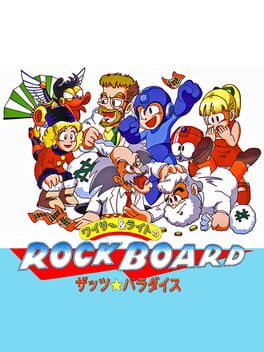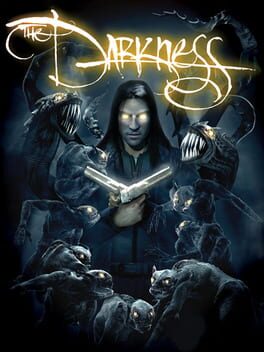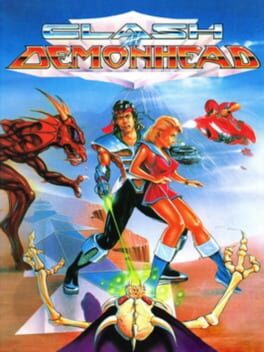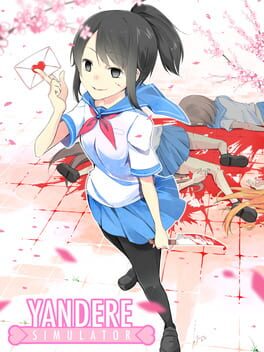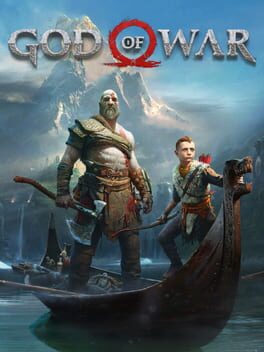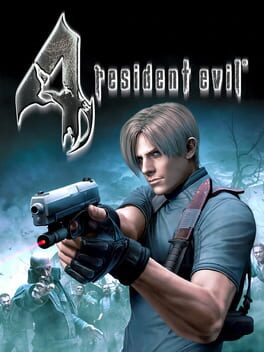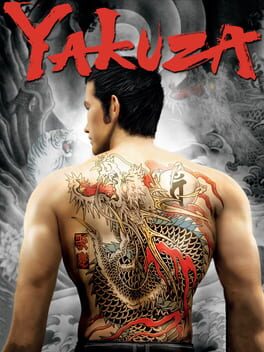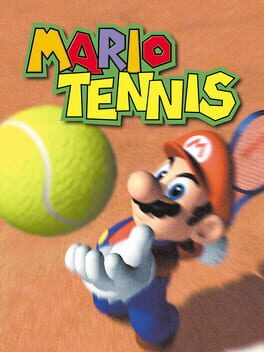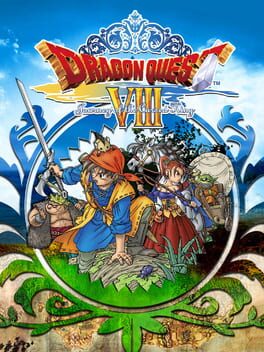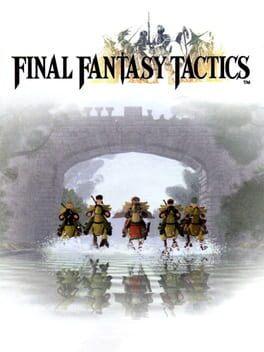1724 reviews liked by wheatie
Sonic Drift 2
1995
I’m gonna talk about both Drift 1 and Drift 2 since I don’t feel like writing two reviews and they are so similar it doesn’t really feel worth it.
For what Sonic Drift wants to achieve it’s not bad at all. Problem is it’s not achieving much pfftt. I don’t think an 8-bit kart racer released in 1994 was ever going to knock anyone’s socks off, but for little Jimmy in the back of the car on the trip to grandma’s I imagine this to be a very serviceable way to pass the time. It’s a good, engaging challenge to look at the map and signs, and make your turns at the right time! The minimum for a racing game!
Unfortunately that minimum is about all it has going for it, so anyone who isn’t little Jimmy is unlikely to willingly spend more than an hour with this game. The general Sonic theming is as good as it could be with tracks based on Sonic 1 zones, and characters with varying stats (not told in the game? Maybe in a manual?) reflecting their personalities(?), but it’s very hard to appreciate that when the actual game is just so barebones. The “items” don’t add too much either. The little animations and pictures of the characters that change depending on whether they’re winning or losing do a put a smile on my face though, they’re just so silly (and some very derpy :P ).
Sonic Drift 2 devs read my last paragraph, said “get a load of this guy!” and proceeded to shove a bunch of new stuff into the game that kinda feels like if it got a modern day dlc:
- More characters! Fang, “Knucles”, and Metal Sonic are here, cool.
- More creative zones! Some Sonic 2 based ones and a quite a few original ones
- More ambitious stages: more obstacles in the road, tunnels, half-pipe turns, bottomless cliffs,seizure inducing lightning effects, etc.
- More opportunities to use items, and character abilities
There is probably a bunch of stuff I’m missing as well because I admit I didn’t exactly play this one thoroughly; I was definitely getting bored. Theoretically these features should make the game much more interesting. For me though, I’m still playing Sonic Drift, and no amount of cool additional sparklies or shinies is really elevating my experience very much. If all of the concepts in this were moved to a mega drive version (with easy built in multiplayer??) then I think I could appreciate them much more, instead of just occasionally feeling like I did something cool that I previously couldn’t do.
Apparently there is 2-player versus available. I'm just learning right now, you gotta use the “Gear-to-Gear” cable pfftt. That would totally be the most fun way to experience the Drifts. But as they stand, racing against the CPUs just wasn’t too thrilling after the first couple GPs.
Drift 1, Drift 2, it’s all the same really.
For what Sonic Drift wants to achieve it’s not bad at all. Problem is it’s not achieving much pfftt. I don’t think an 8-bit kart racer released in 1994 was ever going to knock anyone’s socks off, but for little Jimmy in the back of the car on the trip to grandma’s I imagine this to be a very serviceable way to pass the time. It’s a good, engaging challenge to look at the map and signs, and make your turns at the right time! The minimum for a racing game!
Unfortunately that minimum is about all it has going for it, so anyone who isn’t little Jimmy is unlikely to willingly spend more than an hour with this game. The general Sonic theming is as good as it could be with tracks based on Sonic 1 zones, and characters with varying stats (not told in the game? Maybe in a manual?) reflecting their personalities(?), but it’s very hard to appreciate that when the actual game is just so barebones. The “items” don’t add too much either. The little animations and pictures of the characters that change depending on whether they’re winning or losing do a put a smile on my face though, they’re just so silly (and some very derpy :P ).
Sonic Drift 2 devs read my last paragraph, said “get a load of this guy!” and proceeded to shove a bunch of new stuff into the game that kinda feels like if it got a modern day dlc:
- More characters! Fang, “Knucles”, and Metal Sonic are here, cool.
- More creative zones! Some Sonic 2 based ones and a quite a few original ones
- More ambitious stages: more obstacles in the road, tunnels, half-pipe turns, bottomless cliffs,
- More opportunities to use items, and character abilities
There is probably a bunch of stuff I’m missing as well because I admit I didn’t exactly play this one thoroughly; I was definitely getting bored. Theoretically these features should make the game much more interesting. For me though, I’m still playing Sonic Drift, and no amount of cool additional sparklies or shinies is really elevating my experience very much. If all of the concepts in this were moved to a mega drive version (with easy built in multiplayer??) then I think I could appreciate them much more, instead of just occasionally feeling like I did something cool that I previously couldn’t do.
Apparently there is 2-player versus available. I'm just learning right now, you gotta use the “Gear-to-Gear” cable pfftt. That would totally be the most fun way to experience the Drifts. But as they stand, racing against the CPUs just wasn’t too thrilling after the first couple GPs.
Drift 1, Drift 2, it’s all the same really.
Kirby's Star Stacker
1997
I know I said Block Ball was close to being one of the best spinoff games I played in this Kirbyathon thus far, until it kinda shit the bed the bit in the endgame, however I think Kirby's Star Stacker actually is the best Kirby spinoff up to this point (behind Dream Course at least).
It's a puzzle game, like Kirby's Avalanche, except this game is way easier in general than Puyo Puyo. Because I suck at Puyo Puyo, I found this more fun. Instead of having to set up complex combos to defeat your opponent, you just have to clear lines with stars in them to beat each stage. Combos are a thing in this game, and they also give you stars depending on how long they are, but they are way easier to perform in this game and technically aren't necessary to beat a stage. Something I do like about these combos tho is, once you start racking up combos, it throws out stars that can get you more lines if your animal buddies are in the right spots. Speaking of them, that's who you're lining up with the stars. Kine, Koo and Rick along with the stars are the main "blocks" in this game. They have a sort of chibi look and it's super cute. There are other blocks too to mix the gameplay up, like bomb blocks that clear a whole row, these blocks you must clear in a line to unlock a star inside and blocks that act like stars but don't give you stars. Use all these blocks efficiently to get the required number of stars you need. It's honestly pretty fun.
Outside of this main mode, you have a VS mode you can play with a friend. Obviously, I didn't touch this, but the other two modes, I did a bit. Those are just clear as many stars as you can till you die, and clear as many stars as you can before time runs out. They're fun little time wasters and just add more content to the game.
This is yet again, another game I technically didn't beat. The game had four difficulties and I beat them all. It got pretty tough at the end of the fourth one, but I was able to complete it. Then a hidden fifth difficulty unlocked, and it had 50 levels! The other difficulties prior only had 16 levels each (besides the easy mode which had 8). I beat the first level of the "insane" difficulty and decided I had my fill, as I probably would start to dislike the game if I did all 50 levels lol.
Not much to say with this one, despite it being one of the better Kirby spinoffs. It's just a fun little time, and more fun than Puyo Puyo imo. I know there's a Super Nintendo version, so if it's just like this game but with improved graphics and music, I know I'll enjoy that too!
It's a puzzle game, like Kirby's Avalanche, except this game is way easier in general than Puyo Puyo. Because I suck at Puyo Puyo, I found this more fun. Instead of having to set up complex combos to defeat your opponent, you just have to clear lines with stars in them to beat each stage. Combos are a thing in this game, and they also give you stars depending on how long they are, but they are way easier to perform in this game and technically aren't necessary to beat a stage. Something I do like about these combos tho is, once you start racking up combos, it throws out stars that can get you more lines if your animal buddies are in the right spots. Speaking of them, that's who you're lining up with the stars. Kine, Koo and Rick along with the stars are the main "blocks" in this game. They have a sort of chibi look and it's super cute. There are other blocks too to mix the gameplay up, like bomb blocks that clear a whole row, these blocks you must clear in a line to unlock a star inside and blocks that act like stars but don't give you stars. Use all these blocks efficiently to get the required number of stars you need. It's honestly pretty fun.
Outside of this main mode, you have a VS mode you can play with a friend. Obviously, I didn't touch this, but the other two modes, I did a bit. Those are just clear as many stars as you can till you die, and clear as many stars as you can before time runs out. They're fun little time wasters and just add more content to the game.
This is yet again, another game I technically didn't beat. The game had four difficulties and I beat them all. It got pretty tough at the end of the fourth one, but I was able to complete it. Then a hidden fifth difficulty unlocked, and it had 50 levels! The other difficulties prior only had 16 levels each (besides the easy mode which had 8). I beat the first level of the "insane" difficulty and decided I had my fill, as I probably would start to dislike the game if I did all 50 levels lol.
Not much to say with this one, despite it being one of the better Kirby spinoffs. It's just a fun little time, and more fun than Puyo Puyo imo. I know there's a Super Nintendo version, so if it's just like this game but with improved graphics and music, I know I'll enjoy that too!
Featuring Knuckles from Sonic the Hedgehog 3 & Knuckles!
I love Sonic 3K, and I can see why it's widely regarded as one of the best games in the series, it really feels like the full package of 2D Sonic (...and Knuckles).
While Sonic 2 rewarded speed in the level design, 3K emphasizes exploration again in a similar fashion to Sonic CD; the player needs to track down hidden large rings in a level to gain access to the special stages, where Sonic navigates across a maze-like board to activate blue orbs, while steering clear of red ones. Simple in theory, but certainly tricky at times. I would absolutely recommend going out of your way to do these special stages, because you'll unlock the ability to transform into Super Sonic after getting all seven Chaos Emeralds, and blazing through later levels in the Super Saiyan form is a joy. That's enough talk regarding the special stages though, as the actual main level design is the meat of the game.
With over a dozen different levels with multiple acts, Sonic 3K is the longest entry from the classic 2D games, and it's very nice to see how consistent the quality remains throughout its runtime. I'm not going to bring up every stage here (like in my Sonic 1 review), as I don't have extensive thoughts on all of them. There will also be a bunch of inevitable comparisons to other (Sonic) games, as I bear the curse of only recently becoming a fan in 2024 and those games just happen to be fresh in my memory.
Angel Island Zone is an amazing opening level, as it introduces the player right to the design philosophy of 3K and has many easily accessible special stages and multiple of the newly introduced elemental shields. For those who don't know, the elemental shields replace the shield power-up from the previous games and all are special in their own way. The lightning shield allows Sonic to double jump and attract rings, the bubble shield provides a move similar to Bounce Bracelet in Sonic Adventure 2 and allows him to breathe underwater (so the bubbles aren't required), while the fire shield gives immunity to fire (including lava) and a mid-air dash. In Angel Island Zone no shield is particularly better than another, so it's a good place to try their abilities before using them in later levels which make extensive use of their specific traits. One of those levels is Hydrocity Zone, which follows directly afterwards - here the use of the bubble shield is encouraged, as the bubble placements in the levels are only at certain spots and the ability to freely navigate underwater is very important if you actually want to explore there to find special stages without a rush. Marble Garden is arguably the longest and most confusing stage in the game, but it's still enjoyable in its own way. Carnival Night is plenty of fun to rush through too and has some nice underwater segments, while Ice Cap Zone is one of my favorites in the game with the snowboarding intro and overall satisfying level structure - this is particularly cool, because I was already very fond of Ice Cap in Sonic Adventure 1. Meanwhile, Flying Battery Zone is the result of "what if we made Wing Fortress Zone but actually good", taking the airship aesthetic of that level and making it more fun and sightreadable and Sandopolis is an innovative desert level, where the second half reminded me a lot of Pyramid Cave in Sonic Adventure 2. Afterwards follows Lava Reef Zone, which felt very reminiscent of Celeste's Core to me, but also stood out from the rest with its more vertical level design and great soundtrack, causing it to quickly become a favorite. Everything is rounded off with the Death Egg Zone, which gave me huge SA2 vibes again, as the atmosphere felt quite similar to the ARK levels in that game, same with the gravity switching mechanic. The final boss for 3K was also surprisingly fun compared to the other classic 2D entries, and Doomsday Zone is a great bonus for players who got all the Chaos Emeralds. Man, I love Super Sonic, no matter how basic the idea behind him is.
Sonic 3's soundtrack is an interesting one to discuss, as I completed the game through Sonic Origins, which uses the prototype versions of a few songs, as I believe the licensing for Michael Jackson's songs ran out (don't quote me on this). I don't think those prototype versions are as horrible as some make them out to be, and I actually prefer Carnival Night's prototype rendition to the original. Can't say the same for Ice Cap though, the original song is iconic for a good reason and I love how it ties in with the snowboard section at the beginning. The prototype version just sounds a bit too upbeat for my taste here, considering the original track conveys the gloomy feeling of an icy cave perfectly fine. Putting the differences of MJ and prototype songs aside, some other songs I thoroughly enjoy are Angel Island Zone, Hydrocity Zone (Act 1) and Lava Reef Zone (Act 1).
Even 30 years after its original release, Sonic the Hedgehog 3 & Knuckles managed to provide me with a surprisingly good time and I hope that many more people will continue to play it over the years. I really wish I would have grown up with the Sonic games in my childhood...
I love Sonic 3K, and I can see why it's widely regarded as one of the best games in the series, it really feels like the full package of 2D Sonic (...and Knuckles).
While Sonic 2 rewarded speed in the level design, 3K emphasizes exploration again in a similar fashion to Sonic CD; the player needs to track down hidden large rings in a level to gain access to the special stages, where Sonic navigates across a maze-like board to activate blue orbs, while steering clear of red ones. Simple in theory, but certainly tricky at times. I would absolutely recommend going out of your way to do these special stages, because you'll unlock the ability to transform into Super Sonic after getting all seven Chaos Emeralds, and blazing through later levels in the Super Saiyan form is a joy. That's enough talk regarding the special stages though, as the actual main level design is the meat of the game.
With over a dozen different levels with multiple acts, Sonic 3K is the longest entry from the classic 2D games, and it's very nice to see how consistent the quality remains throughout its runtime. I'm not going to bring up every stage here (like in my Sonic 1 review), as I don't have extensive thoughts on all of them. There will also be a bunch of inevitable comparisons to other (Sonic) games, as I bear the curse of only recently becoming a fan in 2024 and those games just happen to be fresh in my memory.
Angel Island Zone is an amazing opening level, as it introduces the player right to the design philosophy of 3K and has many easily accessible special stages and multiple of the newly introduced elemental shields. For those who don't know, the elemental shields replace the shield power-up from the previous games and all are special in their own way. The lightning shield allows Sonic to double jump and attract rings, the bubble shield provides a move similar to Bounce Bracelet in Sonic Adventure 2 and allows him to breathe underwater (so the bubbles aren't required), while the fire shield gives immunity to fire (including lava) and a mid-air dash. In Angel Island Zone no shield is particularly better than another, so it's a good place to try their abilities before using them in later levels which make extensive use of their specific traits. One of those levels is Hydrocity Zone, which follows directly afterwards - here the use of the bubble shield is encouraged, as the bubble placements in the levels are only at certain spots and the ability to freely navigate underwater is very important if you actually want to explore there to find special stages without a rush. Marble Garden is arguably the longest and most confusing stage in the game, but it's still enjoyable in its own way. Carnival Night is plenty of fun to rush through too and has some nice underwater segments, while Ice Cap Zone is one of my favorites in the game with the snowboarding intro and overall satisfying level structure - this is particularly cool, because I was already very fond of Ice Cap in Sonic Adventure 1. Meanwhile, Flying Battery Zone is the result of "what if we made Wing Fortress Zone but actually good", taking the airship aesthetic of that level and making it more fun and sightreadable and Sandopolis is an innovative desert level, where the second half reminded me a lot of Pyramid Cave in Sonic Adventure 2. Afterwards follows Lava Reef Zone, which felt very reminiscent of Celeste's Core to me, but also stood out from the rest with its more vertical level design and great soundtrack, causing it to quickly become a favorite. Everything is rounded off with the Death Egg Zone, which gave me huge SA2 vibes again, as the atmosphere felt quite similar to the ARK levels in that game, same with the gravity switching mechanic. The final boss for 3K was also surprisingly fun compared to the other classic 2D entries, and Doomsday Zone is a great bonus for players who got all the Chaos Emeralds. Man, I love Super Sonic, no matter how basic the idea behind him is.
Sonic 3's soundtrack is an interesting one to discuss, as I completed the game through Sonic Origins, which uses the prototype versions of a few songs, as I believe the licensing for Michael Jackson's songs ran out (don't quote me on this). I don't think those prototype versions are as horrible as some make them out to be, and I actually prefer Carnival Night's prototype rendition to the original. Can't say the same for Ice Cap though, the original song is iconic for a good reason and I love how it ties in with the snowboard section at the beginning. The prototype version just sounds a bit too upbeat for my taste here, considering the original track conveys the gloomy feeling of an icy cave perfectly fine. Putting the differences of MJ and prototype songs aside, some other songs I thoroughly enjoy are Angel Island Zone, Hydrocity Zone (Act 1) and Lava Reef Zone (Act 1).
Even 30 years after its original release, Sonic the Hedgehog 3 & Knuckles managed to provide me with a surprisingly good time and I hope that many more people will continue to play it over the years. I really wish I would have grown up with the Sonic games in my childhood...
The one everyone loves, apparently. For years I didn't get the hype for this game, it was just faster Brawl with less stuff to do, but when I actually sat down and gave it a shot I had a ton of fun with it. I still think Brawl's got the upper hand because of how much content it's got, but this is still excellent.
Random anecdote: I met one of those ultra pro players at a con once and he asked me who my main was and I told him it was Peach, and then he gave me like this whole talk about how great she was competitively because of her aerial movement or something like that, I forget. I just kinda blinked and told him that I didn't even know she was good, I just liked her because she's pretty. Great guy by the way, forget who he was.
Random anecdote: I met one of those ultra pro players at a con once and he asked me who my main was and I told him it was Peach, and then he gave me like this whole talk about how great she was competitively because of her aerial movement or something like that, I forget. I just kinda blinked and told him that I didn't even know she was good, I just liked her because she's pretty. Great guy by the way, forget who he was.
Note: This game uses AI “art” to patch together its visuals. I address this in my review, but I wanted to make clear right away that I am staunchly against such practices. I have deducted points for this reason.
I Live Under Your House is an interesting twist on the horror genre that shares the perspective of a demonic creature who lives alone in a hole and eats humans. You’ll intimately come to know this creature’s inner workings - its thoughts, motivations, and even feelings. You may even empathize with it a bit by the end, despite its violent nature.
The creature lives in an underground network of tunnels and holes that it’s dug out, with an impressively large, almost church-like central room that has been there since before it was born. No one else has access to these tunnels, and in fact, the creature highly values its solitude. The only beings it ever comes into contact besides its food are, first, the uncanny humanoid spirits who laugh at it while it tries to sleep; and secondly, another monster who lives outside of the hole’s exit. This monster tries to engage the creature in conversation whenever it leaves, despite it never wanting to. Still, they encourage it to leave its hole, kill, and eat humans, showing intimate knowledge of how the creature operates mentally and how to manipulate it.
The creature’s origins are left intentionally vague and abstract. In fact, it seems unaware of how it came to be itself, except that it was born from something human-like that has lain comatose in its lair since giving birth. What’s even more interesting is that despite having murdered and eaten dozens of people, the creature doesn’t seem inherently evil. The first time it killed was only because the man it was watching out of pure interest spotted it and started laughing at and beating it. Now, it seems to only get angry at humans when they encroach on its territory - such as nearby campers, or the house that’s just begun to be built directly atop its hole.
[SPOILERS] The story from here primarily focuses on our creature’s budding parasocial relationship with the lone woman who moves in after construction is finished. Its small semblance of peace is ripped away as it’s forced to hear her every move from above. It eventually resolves to kill her, yet upon sneaking into the house and laying eyes on her for the first time, it’s filled with a new sensation; a strange, twisted love that replaces its anger and leaves it confused. It even begins to enjoy listening to her going about her day, and sneaks in a few more times to explore and try to catch a glimpse of her. [END SPOILERS]
It’s a pretty decent conceit for a story and there are definitely some interesting beats, but the writing is largely unmemorable, especially the further into the game you get. The first few minutes are definitely the most intriguing, as you explore the creature’s home and learn what you can about its life. There’s not many big moments that really stand out after that, though, and the closer you get to the ending the more rushed it feels.
My biggest complaint is easily the choices that influence which of the game’s three endings you get, though I did like the endings themselves (either good, bad, or “joyful”.) [SPOILERS] The first is whether to kill or spare one of the construction workers building the house. This is already a pretty silly choice to include, because the creature is hungry and angry at the time and we know from its description of past events that it loses control when it starts to feel this strong urge to kill. There’s really no reason for the creature to choose to spare him in the first place, except for the player’s own sense of empathy. The second decision is even more innocuous, as you can either steal the woman’s dress or leave it during one of your visits. [END SPOILERS]
It doesn’t even really make sense as to why these choices correlate to the endings they do. Neither of them influence the course of the story in any way, instead altering only the very last scene. There’s no grand symbolism or intricate plot details. Instead they just feel like two random moments of the slightest player freedom thrown in to allow for multiple endings at all. The writing first needed to naturally feel like it could diverge into different conclusions (it doesn’t), and then you could include impactful choices that reflect that. Worst of all, these are the only glimmers of “gameplay” you’ll run into while playing this, aside from simply interacting with objects - and the whole game undoubtedly feels more empty for that.
Instead of the actual writing or accompanying mechanics, the atmosphere is what really gives I Live Under Your House’s story impact. From the moment you awaken in the caves there’s a noticeably tense, thick air about everything. You’re totally absorbed in the world from the perspective of this creature, and its warped ideas on concepts such as parenthood, love, and knowledge. It feels as if it could be a real cryptid living in the underground of your own town’s outskirts, responsible for strange disappearances and murders.
As with most decent games, the aesthetics of I Live Under Your House are a big influencer on its tone. But what makes this game stand out from most are the two distinct presentations - not just in terms of style, but gameplay as well. Mechanically, the cave is a point-and-click (although there’s limited interactions and no puzzles.) Its color scheme is a monochrome black and sickly green, and the few character designs dotted throughout are extremely unsettling.
By contrast, the portions that take place in the woman’s home are a low-poly 3D style. You can walk freely and interact with the woman’s belongings for a few extra bits of internal dialogue, just as you can with the creature’s own limited belongings back in the cave. That same sickly green is color-graded over the entire house, keeping a sense of synergy between the two disparate styles.
I honestly really liked both of these styles at first… that is, until I found out that the creator used edited AI images to put them together. I had a sneaking suspicion upon seeing the laughing spirits that haunt the creature’s sleep; they’re definitely visually fascinating, but they undeniably have that indescribable, uncanny AI feeling about them. And honestly, the idea of using AI to produce spooky imagery for a horror game is cool on the surface - but it’s simply a fact that AI can’t create the same thoughtful and consistent designs that humans can. Aside from categorically being worse quality, I hope I don’t need to explain at this point why AI is harmful to actual human artists.
At the very least, the creator does make the sound design on their own - and the result is likely my favorite part of the game! The ambient noises are low and gravelly, and the music is very arrhythmic and unnerving. Some audio cues even call to mind Silent Hill (a huge compliment, obviously.) My only complaint is that certain moments were a bit too loud compared to the rest of the game, to the point that it seems like they were turned up only to be more startling. Aside from that small imperfection, I Live Under Your House overwhelmingly succeeds in the audio department.
I wish I could say that the game carries this success over into its other design elements; but unfortunately, it largely didn’t click for me. The visuals are a great match for the sound at first glance, but the glaring usage of AI is a huge blemish on the entire experience. The writing is strong in terms of worldbuilding, but the meat of the story is less interesting and falls flat by the end. The gameplay was disappointing, to say the least; I thought there might be some true point-and-click puzzles, but the most I got was picking up an unmissable item and bits of (albeit well-written) lore.
And even though the endings are exceptional, replaying the game to earn all three feels like a chore thanks to the downright mundane choices involved - choices which barely change anything except for the last scene, making it feel even less worth it. So while I think there’s a lot of potential here, I also wouldn’t go out of my way to recommend I Live Under Your House. It’s a game with a lot of decent ideas that are outmatched by its shortcomings.
Visuals: 3.5/5
Sound: 4.5/5
Story: 3/5
Gameplay: 1/5
Worldbuilding: 4/5
Overall Game Score: 3/5 [3.2/5]
I Live Under Your House is an interesting twist on the horror genre that shares the perspective of a demonic creature who lives alone in a hole and eats humans. You’ll intimately come to know this creature’s inner workings - its thoughts, motivations, and even feelings. You may even empathize with it a bit by the end, despite its violent nature.
The creature lives in an underground network of tunnels and holes that it’s dug out, with an impressively large, almost church-like central room that has been there since before it was born. No one else has access to these tunnels, and in fact, the creature highly values its solitude. The only beings it ever comes into contact besides its food are, first, the uncanny humanoid spirits who laugh at it while it tries to sleep; and secondly, another monster who lives outside of the hole’s exit. This monster tries to engage the creature in conversation whenever it leaves, despite it never wanting to. Still, they encourage it to leave its hole, kill, and eat humans, showing intimate knowledge of how the creature operates mentally and how to manipulate it.
The creature’s origins are left intentionally vague and abstract. In fact, it seems unaware of how it came to be itself, except that it was born from something human-like that has lain comatose in its lair since giving birth. What’s even more interesting is that despite having murdered and eaten dozens of people, the creature doesn’t seem inherently evil. The first time it killed was only because the man it was watching out of pure interest spotted it and started laughing at and beating it. Now, it seems to only get angry at humans when they encroach on its territory - such as nearby campers, or the house that’s just begun to be built directly atop its hole.
[SPOILERS] The story from here primarily focuses on our creature’s budding parasocial relationship with the lone woman who moves in after construction is finished. Its small semblance of peace is ripped away as it’s forced to hear her every move from above. It eventually resolves to kill her, yet upon sneaking into the house and laying eyes on her for the first time, it’s filled with a new sensation; a strange, twisted love that replaces its anger and leaves it confused. It even begins to enjoy listening to her going about her day, and sneaks in a few more times to explore and try to catch a glimpse of her. [END SPOILERS]
It’s a pretty decent conceit for a story and there are definitely some interesting beats, but the writing is largely unmemorable, especially the further into the game you get. The first few minutes are definitely the most intriguing, as you explore the creature’s home and learn what you can about its life. There’s not many big moments that really stand out after that, though, and the closer you get to the ending the more rushed it feels.
My biggest complaint is easily the choices that influence which of the game’s three endings you get, though I did like the endings themselves (either good, bad, or “joyful”.) [SPOILERS] The first is whether to kill or spare one of the construction workers building the house. This is already a pretty silly choice to include, because the creature is hungry and angry at the time and we know from its description of past events that it loses control when it starts to feel this strong urge to kill. There’s really no reason for the creature to choose to spare him in the first place, except for the player’s own sense of empathy. The second decision is even more innocuous, as you can either steal the woman’s dress or leave it during one of your visits. [END SPOILERS]
It doesn’t even really make sense as to why these choices correlate to the endings they do. Neither of them influence the course of the story in any way, instead altering only the very last scene. There’s no grand symbolism or intricate plot details. Instead they just feel like two random moments of the slightest player freedom thrown in to allow for multiple endings at all. The writing first needed to naturally feel like it could diverge into different conclusions (it doesn’t), and then you could include impactful choices that reflect that. Worst of all, these are the only glimmers of “gameplay” you’ll run into while playing this, aside from simply interacting with objects - and the whole game undoubtedly feels more empty for that.
Instead of the actual writing or accompanying mechanics, the atmosphere is what really gives I Live Under Your House’s story impact. From the moment you awaken in the caves there’s a noticeably tense, thick air about everything. You’re totally absorbed in the world from the perspective of this creature, and its warped ideas on concepts such as parenthood, love, and knowledge. It feels as if it could be a real cryptid living in the underground of your own town’s outskirts, responsible for strange disappearances and murders.
As with most decent games, the aesthetics of I Live Under Your House are a big influencer on its tone. But what makes this game stand out from most are the two distinct presentations - not just in terms of style, but gameplay as well. Mechanically, the cave is a point-and-click (although there’s limited interactions and no puzzles.) Its color scheme is a monochrome black and sickly green, and the few character designs dotted throughout are extremely unsettling.
By contrast, the portions that take place in the woman’s home are a low-poly 3D style. You can walk freely and interact with the woman’s belongings for a few extra bits of internal dialogue, just as you can with the creature’s own limited belongings back in the cave. That same sickly green is color-graded over the entire house, keeping a sense of synergy between the two disparate styles.
I honestly really liked both of these styles at first… that is, until I found out that the creator used edited AI images to put them together. I had a sneaking suspicion upon seeing the laughing spirits that haunt the creature’s sleep; they’re definitely visually fascinating, but they undeniably have that indescribable, uncanny AI feeling about them. And honestly, the idea of using AI to produce spooky imagery for a horror game is cool on the surface - but it’s simply a fact that AI can’t create the same thoughtful and consistent designs that humans can. Aside from categorically being worse quality, I hope I don’t need to explain at this point why AI is harmful to actual human artists.
At the very least, the creator does make the sound design on their own - and the result is likely my favorite part of the game! The ambient noises are low and gravelly, and the music is very arrhythmic and unnerving. Some audio cues even call to mind Silent Hill (a huge compliment, obviously.) My only complaint is that certain moments were a bit too loud compared to the rest of the game, to the point that it seems like they were turned up only to be more startling. Aside from that small imperfection, I Live Under Your House overwhelmingly succeeds in the audio department.
I wish I could say that the game carries this success over into its other design elements; but unfortunately, it largely didn’t click for me. The visuals are a great match for the sound at first glance, but the glaring usage of AI is a huge blemish on the entire experience. The writing is strong in terms of worldbuilding, but the meat of the story is less interesting and falls flat by the end. The gameplay was disappointing, to say the least; I thought there might be some true point-and-click puzzles, but the most I got was picking up an unmissable item and bits of (albeit well-written) lore.
And even though the endings are exceptional, replaying the game to earn all three feels like a chore thanks to the downright mundane choices involved - choices which barely change anything except for the last scene, making it feel even less worth it. So while I think there’s a lot of potential here, I also wouldn’t go out of my way to recommend I Live Under Your House. It’s a game with a lot of decent ideas that are outmatched by its shortcomings.
Visuals: 3.5/5
Sound: 4.5/5
Story: 3/5
Gameplay: 1/5
Worldbuilding: 4/5
Overall Game Score: 3/5 [3.2/5]
Tekken 8
2024
Medal of Honor
2010
Look I'd love to just write "we have Modern Warfare at home" and end it there, but no, Medal of Honor 2010 is waayyy worse.
Good things first: The score is actually great and I wish it was part of a better game. Same applies to the Linkin Park song used during the credits (what's up with Linkin Park being everywhere during the late 00s?). There's a single mission I enjoyed, and I guess the gunplay is occasionally serviceable, at least when it's not ruined by the weird mouse input.
Everything else is just varying degrees of awful. Unlike the long dead multi-player part, the campaign runs on Unreal Engine 3 and looks exactly like you'd expect a generic military fps in this engine to look: incredibly ugly, almost as ugly as the ui. The game's story is similarly generic and an incoherent mess filled with stereotypical characters.
As if all of that wasn't bad enough, the game is also very buggy. I'm not talking about the occasional animation bug or flickering texture, no, this game will force you to replay entire mission! Occasionally, your teammates will get stuck on level props and not move any further. Doesn't sound that bad when you consider how stupid their ai is, but once you reach the next scripted event, the game will not proceed since one of the NPCs needed to trigger the script is missing - you're stuck.
In a case like that, even loading a checkpoint won't work, since a lot of the time the NPC got stuck before the checkpoint save was created and will still be stuck upon reloading, somewhere in a now inaccessible part of the level. Just imagine having to constantly keep track of all the soldiers running around in Call of Duty, or Elizabeth in Bioshock, just in case they get stuck... I had to replay not one, but TWO missions because of this bug! Including the final fucking mission of the game in its entirety, since the script that didn't trigger was what was keeping me from the final cinematic and the end of the game!
It gets worse: the game's story has aged incredibly awful. This is a game that portrays the fucking War in Afghanistan as a noble cause fought by heroic US troops that they'd surely win, if it wasn't for those evil bureaucrats in Washington. The game has the audacity to make you conquer Bagram airbase during a mission, a place that would later be used as a prison, with the Red Cross reporting multiple human rights violations, including inmates being tortured. The devs couldn't have known how the overall situation in Afghanistan would ultimately develop, but the Bagram prison torture had already been reported on for years when the game came out in 2010. Reactions at the time of release were more focused on the fact that the multi-player let players play AS THE FUCKING TALIBAN, which I still cannot believe is something that made it into a commercially released game.
This game is a buggy, incoherent mess, dragged down even further by its absolutely tone deaf political messaging. Unless you want to see how bad it is for yourself, or you're looking into it for research purposes, I genuinely don't see a reason for anyone to play this.
Good things first: The score is actually great and I wish it was part of a better game. Same applies to the Linkin Park song used during the credits (what's up with Linkin Park being everywhere during the late 00s?). There's a single mission I enjoyed, and I guess the gunplay is occasionally serviceable, at least when it's not ruined by the weird mouse input.
Everything else is just varying degrees of awful. Unlike the long dead multi-player part, the campaign runs on Unreal Engine 3 and looks exactly like you'd expect a generic military fps in this engine to look: incredibly ugly, almost as ugly as the ui. The game's story is similarly generic and an incoherent mess filled with stereotypical characters.
As if all of that wasn't bad enough, the game is also very buggy. I'm not talking about the occasional animation bug or flickering texture, no, this game will force you to replay entire mission! Occasionally, your teammates will get stuck on level props and not move any further. Doesn't sound that bad when you consider how stupid their ai is, but once you reach the next scripted event, the game will not proceed since one of the NPCs needed to trigger the script is missing - you're stuck.
In a case like that, even loading a checkpoint won't work, since a lot of the time the NPC got stuck before the checkpoint save was created and will still be stuck upon reloading, somewhere in a now inaccessible part of the level. Just imagine having to constantly keep track of all the soldiers running around in Call of Duty, or Elizabeth in Bioshock, just in case they get stuck... I had to replay not one, but TWO missions because of this bug! Including the final fucking mission of the game in its entirety, since the script that didn't trigger was what was keeping me from the final cinematic and the end of the game!
It gets worse: the game's story has aged incredibly awful. This is a game that portrays the fucking War in Afghanistan as a noble cause fought by heroic US troops that they'd surely win, if it wasn't for those evil bureaucrats in Washington. The game has the audacity to make you conquer Bagram airbase during a mission, a place that would later be used as a prison, with the Red Cross reporting multiple human rights violations, including inmates being tortured. The devs couldn't have known how the overall situation in Afghanistan would ultimately develop, but the Bagram prison torture had already been reported on for years when the game came out in 2010. Reactions at the time of release were more focused on the fact that the multi-player let players play AS THE FUCKING TALIBAN, which I still cannot believe is something that made it into a commercially released game.
This game is a buggy, incoherent mess, dragged down even further by its absolutely tone deaf political messaging. Unless you want to see how bad it is for yourself, or you're looking into it for research purposes, I genuinely don't see a reason for anyone to play this.
As of now, I have only completed up until 7D, because 9D looks like a whole nother ordeal. but WOW HOLY SHIT AHHHHHHHHHHHH FINALLY I LITERALLY DIED ON THE FINAL HEART LIKE 5 TIMES AHAHAHAHAHAH 16 HOURS JUST ON SUMMIT ALONE BUT IT'S DONE, FINISHED, OWARI DA.
The next time I return here, Final Goodbye will be finished.
The next time I return here, Final Goodbye will be finished.
Sonic Adventure 2
2001
Sonic Adventure 1 Review
I recently went on a nostalgia trip by experiencing the original version of Sonic Adventure for the first time, after only having played the DX version on the GameCube. Once I finished it, I decided to continue that nostalgia trip by going ahead and playing through the Dreamcast version of its sequel as well. I was quite fond of both games as a kid, but at some point, I got the idea in my head that the first Adventure was better than the second. After coming back to both games, I no longer believe that to be true. Both games have problems, but Sonic Adventure 2 is a far more consistent and polished experience. It definitely has some low points, but it’s still a solid improvement over its predecessor that trims a lot of its fat.
After Dr. Eggman looks into his family history, he discovers a top secret project that was worked on by his grandfather, Dr. Gerald Robotnik. He infiltrates a military base where this project was being stored and uncovers Shadow the Hedgehog: The Ultimate Lifeform. Shadow promises Eggman a wish and brings Eggman to the Space Colony ARK, where he shows off the Eclipse Canon, a weapon of mass destruction powered by the seven Chaos Emeralds. Meanwhile, the military mistakes Sonic for Shadow, and their forces set out to capture him, all the while completely unaware they’re chasing after the wrong hedgehog. Sonic, Tails and Knuckles once again band together to take down Eggman, Shadow, and the mysterious Rouge the Bat and clear Sonic’s name before Eggman and his allies manage to obtain all of the Chaos Emeralds and power up the Eclipse Canon.
Instead of each playable character having their own unique campaign to play through, the main story of Sonic Adventure 2 is told through two campaigns that each star three characters. There’s Hero, which stars the classic trio of Sonic, Tails and Knuckles, and Dark, which stars Dr. Eggman and newcomers Shadow the Hedgehog and Rouge the Bat. One character from each campaign share a different style of gameplay that comes from the first Adventure. This time around each character has their own unique stages, unlike in the previous game, where you generally played through chopped up versions of Sonic’s stages. For the most part, each character having their own unique stage is to Sonic Adventure 2’s benefit, and while some stages do have flaws that I’ll be getting into, at the very least this keeps the game from feeling as repetitive as Sonic Adventure did with its stages.
Sonic and Shadow’s stages feature the same speed focused platforming gameplay as Sonic’s stages from Adventure. They’re no longer composed of multiple sections, but the stages themselves are still comparable in length to the ones from the previous game. These stages are all fantastic, and once again, easily the best part of the game in general. They’re all laser focused on bringing out the best of these characters’ gameplay. I also had significantly less issues with the camera this time around, which was one of my biggest hang ups with the first Adventure. There were definitely still times where the camera would freak out or not cooperate, but not nearly as much as in the previous game.
Tails and Eggman’s gameplay is a more refined version of E-102 Gamma’s gameplay from the previous game. Tails and Eggman each pilot a small mech, and they run and gun throughout their stages with the same auto-homing shots as Gamma. This is where each character having their own unique stage really shines, as Tails and Eggman’s stages offer unique platforming challenges built around their moveset. Their stages are a lot longer compared to Gamma’s as well, giving a chance for their gameplay to actually breathe. My biggest complaint with Gamma’s gameplay and stages was that they all felt rather braindead. Since your projectiles automatically homed in on whatever you target, there wasn’t really anything stopping you from just targeting everything without any second thought. Tails and Eggman’s gameplay isn’t quite as trivial as Gamma’s was. While it’s still rather easy for the most part, there are actually a few enemies that require you to time your shots, as well as a couple of stages that will actually punish you for mindlessly targeting and shooting everything with environmental hazards that can cause you to take damage or die if you end up shooting them, which is a great way to force you to pay attention to what you’re shooting.
Finally, Knuckles and Rouge share Knuckles’ exploration-based gameplay from Adventure , where you search through stages for pieces of the Master Emerald. Unfortunately, despite also being given unique stages, Knuckles and Rouge’s gameplay isn’t a direct upgrade from Adventure, and it’s during their stages where a lot of my problems with the game stem from. For starters, the Emerald Radar, which is a tool that would beep at increasingly faster speeds the closer you get to an Emerald piece, was changed so that it only detects one Emerald piece at a time, whereas in Adventure, it could detect all three pieces at once. I have a theory about why this was done: Knuckles stages in Adventure tended to be rather small in terms of scale, and having the radar being able to detect all three Emerald pieces at once made it easy to find them rather quickly. In Adventure 2 however, all of Knuckles’ (and Rogue’s) stages are a lot larger compared to Knuckles’ stages in the previous game, so it makes hunting down the Emerald pieces one at a time take a lot longer. This problem gets worse with each subsequent stage, as they get larger and larger, coming to a head with the stages Meteor Herd and Mad Space, the final stages for Knuckles and Rouge respectively. These stages are so large that it can take up to 15 minutes to beat them if you’re unlucky with where the Emerald pieces are placed. Also, the one key difference between the Dreamcast version and the GameCube version of Sonic Adventure 2 that would make me recommend the latter over the former is that if Knuckles or Rouge walk or climb over a surface where an Emerald piece is buried, an exclamation point will appear above their head, letting you know that the piece is buried in that specific spot. This exclamation point doesn’t appear in the Dreamcast version, which made trying to find buried Emerald pieces a much bigger headache.
One aspect of Sonic Adventure that I completely forgot to talk about in my review for it was its various hub worlds that you need to travel through in-between stages. The main reason why I forgot to mention them was because of how little they really added to the game. They felt like they were just there for the sake of being there. They were rather small, they weren’t very interesting to explore, and there wasn’t much you could do in them besides just going into one of the characters’ levels or the Chao Garden. You could find some optional power ups for characters, which admittedly were kind of useful, but also weren’t necessary to finish the game and didn’t really enrich the experience that much further. As such, it’s no surprise that they were cut from Sonic Adventure 2, which was truly for the best. Instead, each campaign simply has one character’s stage follow another, and you can travel to the Chao Garden by finding a Chao Key item in a stage.
The story is a bit more straightforward and less ambitious than Sonic Adventure’s, but I think that was for the best, as it flows a lot better. It’s a Sonic game, so the writing isn’t some airtight masterwork of fiction, but it’s a decent enough story with some high stakes and thrilling moments. There are some aspects to the story that, even as a kid, I thought were questionable. In particular, the fact that anyone could confuse Sonic for Shadow and vice versa when they look nothing alike always confused me, even back then. Also Amy Rose appears as a non-playable character in the story, and her presence in general really confuses me. She frequently just… appears in locations with little to no explanation. It feels like she was meant to have a larger role in the game that got cut down heavily. The voice acting sounds a lot better this time around. Some characters do still sound a bit stiff like Tails and Rouge, but everyone else sounds like they have a lot more energy and are actually trying with their performances. Though Deem Bristow’s Eggman once again steals the show, I really gotta say, I feel like Ryan Drummond’s Sonic in particular has significantly improved. He sounds way more lively than before, and he does a better job capturing Sonic’s wit and attitude.
The music continues the Sonic series’ tradition of being fantastic. Something that I noticed during this playthrough is that each character has a specific type of music that plays during their stages. Sonic’s stages have fast paced punk rock tracks, Tails has upbeat rock that occasionally features some synthesizers, Knuckles has old school hip hop, Shadow features very bass heavy techno with distorted vocals, Eggman has heavy rock tracks that feature a lot of synthesizers, and Rouge has upbeat jazz tracks very reminiscent of spy films like the 007 movies, but with a lot of sensual sounding female background vocals. It’s a really excellent touch, and I very much dig how each stage’s song feels like it was tailored not just for the stage, but for the characters themselves. Some of my favorite tracks include Green Forest, Pumpkin Hill, White Jungle, and Cosmic Wall. (Yes I like City Escape too, I just thought claiming it as a favorite would be disingenuous and boring).
One of the game’s most notable issues is how truly awful its audio mixing and sound design is. Sound effects are deafeningly loud, in particular Tails and Eggman’s targeting laser as well as the Emerald Radar in Knuckles and Rouge’s stages. They both beep obnoxiously loudly. In stages where the Military are pursuing you like in Metal Harbor, Weapons Bed, or Mission Street, there will be this airplane engine sound effect that is also just so ridiculously loud it drowns out all of the other sounds and music that plays on the stage. Meanwhile the dialogue is too quiet, and characters frequently talk over each other. This can lead to some funny exchanges, such as during the cutscene where Sonic and Shadow battle one another on Prison Island, which for whatever reason has always tickled my funny bone even when I was little. The sound design doesn’t make the game unplayable by any means, but it’s very noticeable, jarring and annoying.
I was surprised to find that I still dig Sonic Adventure 2, at least more than I expected to after revisiting Sonic Adventure just before. There was a clear effort to improve upon Sonic Adventure, and I really respect that. I do think they did a rather decent job doing so for the most part. The Knuckles and Rouge stages are definitely a drag, the audio mixing is rather horrendous, and there are aspects of the story that can be a bit questionable, but the game as a whole still manages to be a pretty good time despite that, thanks to the excellent gameplay and level design of the other characters’ stages. At its best, Sonic Adventure 2 still manages to be hype even after all these years, and that’s not just the nostalgia talking.
I recently went on a nostalgia trip by experiencing the original version of Sonic Adventure for the first time, after only having played the DX version on the GameCube. Once I finished it, I decided to continue that nostalgia trip by going ahead and playing through the Dreamcast version of its sequel as well. I was quite fond of both games as a kid, but at some point, I got the idea in my head that the first Adventure was better than the second. After coming back to both games, I no longer believe that to be true. Both games have problems, but Sonic Adventure 2 is a far more consistent and polished experience. It definitely has some low points, but it’s still a solid improvement over its predecessor that trims a lot of its fat.
After Dr. Eggman looks into his family history, he discovers a top secret project that was worked on by his grandfather, Dr. Gerald Robotnik. He infiltrates a military base where this project was being stored and uncovers Shadow the Hedgehog: The Ultimate Lifeform. Shadow promises Eggman a wish and brings Eggman to the Space Colony ARK, where he shows off the Eclipse Canon, a weapon of mass destruction powered by the seven Chaos Emeralds. Meanwhile, the military mistakes Sonic for Shadow, and their forces set out to capture him, all the while completely unaware they’re chasing after the wrong hedgehog. Sonic, Tails and Knuckles once again band together to take down Eggman, Shadow, and the mysterious Rouge the Bat and clear Sonic’s name before Eggman and his allies manage to obtain all of the Chaos Emeralds and power up the Eclipse Canon.
Instead of each playable character having their own unique campaign to play through, the main story of Sonic Adventure 2 is told through two campaigns that each star three characters. There’s Hero, which stars the classic trio of Sonic, Tails and Knuckles, and Dark, which stars Dr. Eggman and newcomers Shadow the Hedgehog and Rouge the Bat. One character from each campaign share a different style of gameplay that comes from the first Adventure. This time around each character has their own unique stages, unlike in the previous game, where you generally played through chopped up versions of Sonic’s stages. For the most part, each character having their own unique stage is to Sonic Adventure 2’s benefit, and while some stages do have flaws that I’ll be getting into, at the very least this keeps the game from feeling as repetitive as Sonic Adventure did with its stages.
Sonic and Shadow’s stages feature the same speed focused platforming gameplay as Sonic’s stages from Adventure. They’re no longer composed of multiple sections, but the stages themselves are still comparable in length to the ones from the previous game. These stages are all fantastic, and once again, easily the best part of the game in general. They’re all laser focused on bringing out the best of these characters’ gameplay. I also had significantly less issues with the camera this time around, which was one of my biggest hang ups with the first Adventure. There were definitely still times where the camera would freak out or not cooperate, but not nearly as much as in the previous game.
Tails and Eggman’s gameplay is a more refined version of E-102 Gamma’s gameplay from the previous game. Tails and Eggman each pilot a small mech, and they run and gun throughout their stages with the same auto-homing shots as Gamma. This is where each character having their own unique stage really shines, as Tails and Eggman’s stages offer unique platforming challenges built around their moveset. Their stages are a lot longer compared to Gamma’s as well, giving a chance for their gameplay to actually breathe. My biggest complaint with Gamma’s gameplay and stages was that they all felt rather braindead. Since your projectiles automatically homed in on whatever you target, there wasn’t really anything stopping you from just targeting everything without any second thought. Tails and Eggman’s gameplay isn’t quite as trivial as Gamma’s was. While it’s still rather easy for the most part, there are actually a few enemies that require you to time your shots, as well as a couple of stages that will actually punish you for mindlessly targeting and shooting everything with environmental hazards that can cause you to take damage or die if you end up shooting them, which is a great way to force you to pay attention to what you’re shooting.
Finally, Knuckles and Rouge share Knuckles’ exploration-based gameplay from Adventure , where you search through stages for pieces of the Master Emerald. Unfortunately, despite also being given unique stages, Knuckles and Rouge’s gameplay isn’t a direct upgrade from Adventure, and it’s during their stages where a lot of my problems with the game stem from. For starters, the Emerald Radar, which is a tool that would beep at increasingly faster speeds the closer you get to an Emerald piece, was changed so that it only detects one Emerald piece at a time, whereas in Adventure, it could detect all three pieces at once. I have a theory about why this was done: Knuckles stages in Adventure tended to be rather small in terms of scale, and having the radar being able to detect all three Emerald pieces at once made it easy to find them rather quickly. In Adventure 2 however, all of Knuckles’ (and Rogue’s) stages are a lot larger compared to Knuckles’ stages in the previous game, so it makes hunting down the Emerald pieces one at a time take a lot longer. This problem gets worse with each subsequent stage, as they get larger and larger, coming to a head with the stages Meteor Herd and Mad Space, the final stages for Knuckles and Rouge respectively. These stages are so large that it can take up to 15 minutes to beat them if you’re unlucky with where the Emerald pieces are placed. Also, the one key difference between the Dreamcast version and the GameCube version of Sonic Adventure 2 that would make me recommend the latter over the former is that if Knuckles or Rouge walk or climb over a surface where an Emerald piece is buried, an exclamation point will appear above their head, letting you know that the piece is buried in that specific spot. This exclamation point doesn’t appear in the Dreamcast version, which made trying to find buried Emerald pieces a much bigger headache.
One aspect of Sonic Adventure that I completely forgot to talk about in my review for it was its various hub worlds that you need to travel through in-between stages. The main reason why I forgot to mention them was because of how little they really added to the game. They felt like they were just there for the sake of being there. They were rather small, they weren’t very interesting to explore, and there wasn’t much you could do in them besides just going into one of the characters’ levels or the Chao Garden. You could find some optional power ups for characters, which admittedly were kind of useful, but also weren’t necessary to finish the game and didn’t really enrich the experience that much further. As such, it’s no surprise that they were cut from Sonic Adventure 2, which was truly for the best. Instead, each campaign simply has one character’s stage follow another, and you can travel to the Chao Garden by finding a Chao Key item in a stage.
The story is a bit more straightforward and less ambitious than Sonic Adventure’s, but I think that was for the best, as it flows a lot better. It’s a Sonic game, so the writing isn’t some airtight masterwork of fiction, but it’s a decent enough story with some high stakes and thrilling moments. There are some aspects to the story that, even as a kid, I thought were questionable. In particular, the fact that anyone could confuse Sonic for Shadow and vice versa when they look nothing alike always confused me, even back then. Also Amy Rose appears as a non-playable character in the story, and her presence in general really confuses me. She frequently just… appears in locations with little to no explanation. It feels like she was meant to have a larger role in the game that got cut down heavily. The voice acting sounds a lot better this time around. Some characters do still sound a bit stiff like Tails and Rouge, but everyone else sounds like they have a lot more energy and are actually trying with their performances. Though Deem Bristow’s Eggman once again steals the show, I really gotta say, I feel like Ryan Drummond’s Sonic in particular has significantly improved. He sounds way more lively than before, and he does a better job capturing Sonic’s wit and attitude.
The music continues the Sonic series’ tradition of being fantastic. Something that I noticed during this playthrough is that each character has a specific type of music that plays during their stages. Sonic’s stages have fast paced punk rock tracks, Tails has upbeat rock that occasionally features some synthesizers, Knuckles has old school hip hop, Shadow features very bass heavy techno with distorted vocals, Eggman has heavy rock tracks that feature a lot of synthesizers, and Rouge has upbeat jazz tracks very reminiscent of spy films like the 007 movies, but with a lot of sensual sounding female background vocals. It’s a really excellent touch, and I very much dig how each stage’s song feels like it was tailored not just for the stage, but for the characters themselves. Some of my favorite tracks include Green Forest, Pumpkin Hill, White Jungle, and Cosmic Wall. (Yes I like City Escape too, I just thought claiming it as a favorite would be disingenuous and boring).
One of the game’s most notable issues is how truly awful its audio mixing and sound design is. Sound effects are deafeningly loud, in particular Tails and Eggman’s targeting laser as well as the Emerald Radar in Knuckles and Rouge’s stages. They both beep obnoxiously loudly. In stages where the Military are pursuing you like in Metal Harbor, Weapons Bed, or Mission Street, there will be this airplane engine sound effect that is also just so ridiculously loud it drowns out all of the other sounds and music that plays on the stage. Meanwhile the dialogue is too quiet, and characters frequently talk over each other. This can lead to some funny exchanges, such as during the cutscene where Sonic and Shadow battle one another on Prison Island, which for whatever reason has always tickled my funny bone even when I was little. The sound design doesn’t make the game unplayable by any means, but it’s very noticeable, jarring and annoying.
I was surprised to find that I still dig Sonic Adventure 2, at least more than I expected to after revisiting Sonic Adventure just before. There was a clear effort to improve upon Sonic Adventure, and I really respect that. I do think they did a rather decent job doing so for the most part. The Knuckles and Rouge stages are definitely a drag, the audio mixing is rather horrendous, and there are aspects of the story that can be a bit questionable, but the game as a whole still manages to be a pretty good time despite that, thanks to the excellent gameplay and level design of the other characters’ stages. At its best, Sonic Adventure 2 still manages to be hype even after all these years, and that’s not just the nostalgia talking.
208 lists liked by wheatie
by Serious |
16 Games
by UrLocalBanktoad |
22 Games
by Superstar |
24 Games
by C_F |
13 Games
by CodeNameYogurt |
4 Games
by VSLazer |
16 Games
by QuentTheSlayer |
28 Games

